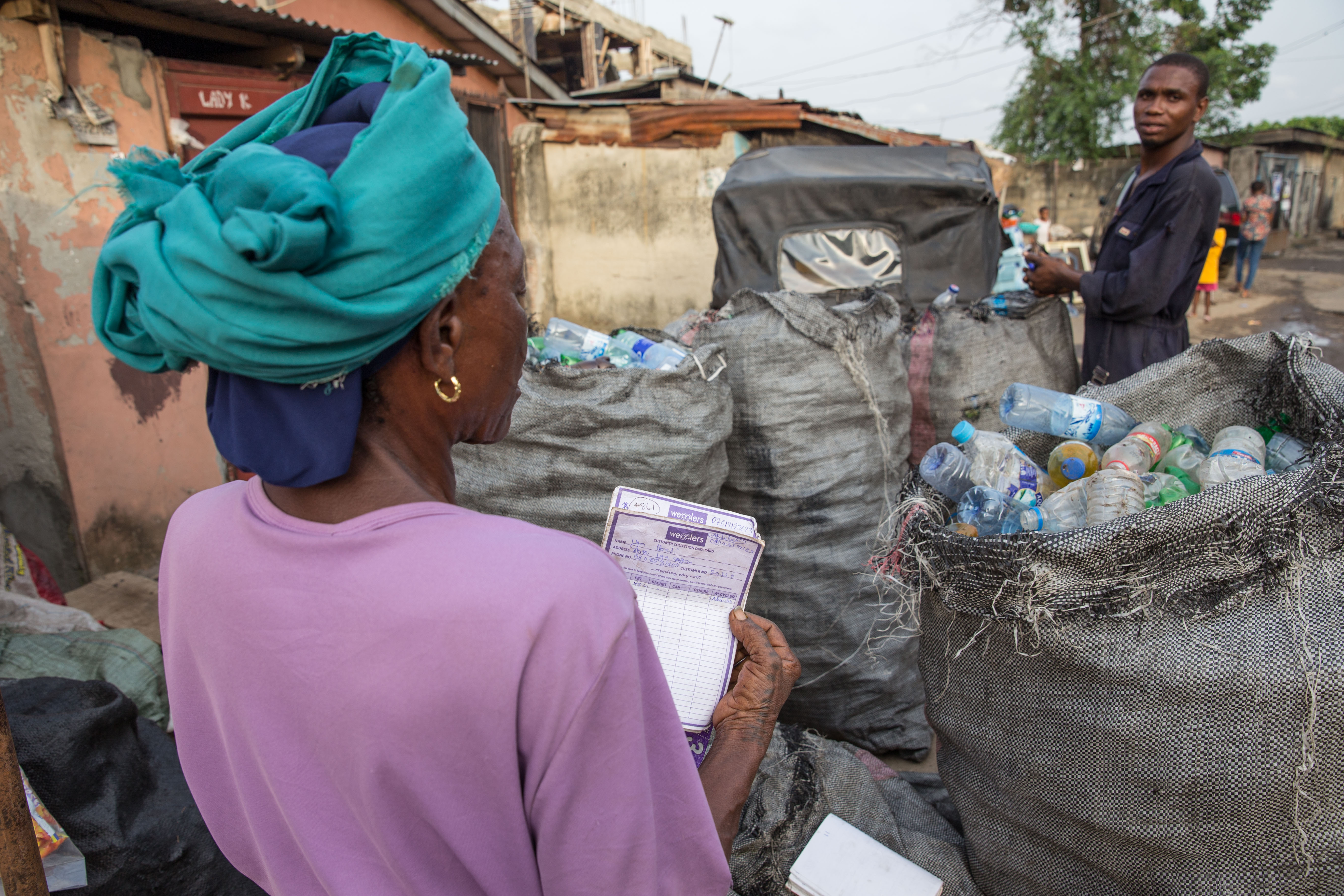As 2024 bids farewell, it is leaving behind a year marked by scorching heat, devastating storms, and unparalleled climatic upheavals.
Around the globe, records tumbled as temperatures soared, and extreme weather events pushed humanity further into the grip of a warming planet.
Rising temperatures left behind an uncomfortable reality: the climate crisis is no longer a distant spectre—it is reshaping lives and landscapes now.
A RECORD-BREAKING YEAR OF HEATWAVE
Advertisement

The year 2024 will be remembered as the one in which earth experienced an unprecedented warming, with about 138 countries recording their hottest temperatures ever. Global average temperatures surged to new highs, surpassing last year’s records.
Under the Paris Agreement, countries committed to keeping global warming under 2°C, with a more ambitious target of limiting it to 1.5°C. However, the European Union’s Copernicus Climate Change Service (C3S) in its report said 2024 is on track to be the warmest year on record.
Based on temperatures from January to October, the C3S said 2024 has become the first year to exceed 1.5°C above pre-industrial levels for that period, surpassing 2023 by 0.16°C. The report stated that unless the average temperature anomaly drops to zero for the remainder of the year—a highly improbable scenario—2024 is almost guaranteed to be the warmest year on record.
Advertisement
Similarly, the World Meteorological Organization (WMO) in its state of the climate 2024 report said the year is on track to be the warmest on record after an extended streak of exceptionally high monthly global mean temperatures. The organisation said between January and September, the global average surface air temperature was 1.54°C higher than the pre-industrial average.
However, this does not indicate that the world has surpassed the 1.5°C target outlined in the Paris Agreement, as this goal refers to long-term warming averaged over decades, which remains below that threshold.
The report noted that 2015 to 2024 would be the warmest decade on record, with ocean warming rates accelerating significantly over the past 20 years. The warming of the planet’s oceans will continue irreversibly.
Celeste Saulo, WMO secretary-general, said “it is essential to recognise that every fraction of a degree of warming matters. Whether below or above 1.5°C of warming, every additional increment of global warming increases climate extremes, impacts, and risks.”
Advertisement
According to Carbon Brief, the first six months of 2024 set new temperature records, continuing an extraordinary streak of 13 consecutive months of record-breaking temperatures that began in 2023.
On July 22, the world experienced its highest absolute global daily temperature on record, reaching a scorching 17.15°C.
The heat has been felt globally, with 63 countries—mostly in Africa and South America—also experiencing their warmest June on record. These countries included Brazil, Bulgaria, Cambodia, Colombia, Egypt, Ethiopia, Ghana, Greece, Israel, Ivory Coast, Jordan, Kenya, Lebanon, Libya, Nepal, Romania, Saudi Arabia, Somalia, South Africa, South Korea, Sudan, Syria, Turkey, Venezuela, and Yemen.
Researchers noted that almost no location on the planet experienced record-cold temperatures during this period. This, they attributed to a combination of persistent greenhouse gas emissions, human-induced climate change, and the intensifying El Niño weather pattern.
Advertisement
EXTREME WEATHER ACROSS CONTINENTS

Advertisement
The onslaught of rising temperatures did more than just warm the air, it supercharged the planet’s weather systems.
Prolonged droughts continued to cripple East Africa’s economy in 2024, marking the fourth consecutive year of below-average rainfall in the Horn of Africa. The Sahel region experienced scorching heat and failed harvests, threatening the food security in the region.
Advertisement
Across the continent, rising sea surface temperatures and erratic weather patterns brought intensified flooding in parts of West and East Africa and worsening droughts in the Sahel and Horn of Africa.
Countries like Ethiopia, Ghana, Kenya, and Nigeria recorded their warmest June temperatures since records began, exacerbating the continent’s vulnerability. These extreme climate change conditions displaced communities, strained water resources, and significantly reduced agricultural yields, deepening the hardship for millions.
Advertisement
Nigeria’s climate is already marked by significant variations, with interior lowlands regularly exceeding 27°C, while coastal areas are slightly cooler. In the outgoing year, these natural variations were worsened by prolonged heat events and erratic rainfall. At the start of 2024, the country experienced intense heat during its dry season, leading to reduced agricultural output and increased health risks, including heat-related illnesses like meningitis, stress, high blood pressure, and stroke.
The Nigerian Meteorological Agency (NiMet) had also issued a forecast warning on the prolonged heatwave. The agency said air temperature in the north was at 41°C and 39°C in the south, indicating a significant increase. In February, when temperatures exceeded 40C, an analysis found that they were made 10 times more likely by human-caused climate change. On April 1, temperatures reached a record 44.8°C in Sokoto, north-west Nigeria.
These climate extremes impacted food insecurity and strained water resources. Yunusa Halidu, the national secretary of the All Farmers Association of Nigeria (AFAN), said, “The heat is extreme this year, although we have been expecting it, as we work with NiMet. We know it is global warming, and we are working to see how we can mitigate the effects.”
Vincent Weli, NiMet’s director of weather forecast services, suggested that a state of emergency be declared in states most affected by the heatwave while workers should be allowed to take breaks between noon and 3 pm.
In Europe, thermometers hit over 39°C in Italy’s Sicily and Sardinia, triggering widespread power outages and hospitalisations. In North America, Phoenix experienced an unprecedented 100-day stretch of temperatures exceeding 37.7°C, breaking records and pushing residents’ endurance to the limit.
India, grappling with sweltering pre-monsoon conditions, faced its hottest April on record, with temperatures ranging from 40°C to 46°C in many regions. Torrential rainfall triggered catastrophic floods across southern, central, and eastern China, displacing over a million people.
Meanwhile, the 2024 Atlantic hurricane season saw an unexpected spike in activities, inflicting at least $220 billion in damages and 400 deaths overall. Warmer ocean temperatures acted as a “climate steroid,” intensifying storm surges and rainfall, leaving a trail of destruction from the Caribbean to the southeastern United States.
FEEDBACK LOOPS ACCELERATING WARMING


What makes 2024 particularly alarming is how rising temperatures and extreme weather events are accelerating feedback loops that increase global warming.
The Arctic continued to warm at more than twice the global average, with sea ice extent hitting an all-time low. This loss of reflective ice means more solar heat is absorbed by darker ocean waters, fueling further warming—a process known as Arctic amplification.
Simultaneously, wildfires in North and South America, Bolivia, Venezuela, Mexico, and Brazil unleashed vast amounts of carbon dioxide into the atmosphere. Canada alone experienced an extensive wildfire season, with millions of hectares of land burned. These fires not only reduced carbon sinks but also contributed to a cycle of heat and dryness that increases the likelihood of future wildfires.
The United Nations Environment Programme (UNEP) titled this year’s adaptation gap report ‘Come hell and high water,’ emphasising the urgent need to accelerate efforts in building climate resilience across economies and societies.
Cities like Tokyo and Dubai ramped up efforts to combat urban heat by deploying reflective building materials and expanding green spaces. Yet, adaptation alone is insufficient. The year’s extremes are a stark reminder that mitigation—reducing greenhouse gas emissions—is the only way to prevent catastrophic warming.
UNEP also warned of severe consequences if global temperatures rise by the projected 2.6 to 3.1 °C this century, a scenario likely without significant reductions in greenhouse gas emissions.
A report by the World Weather Attribution (WWA) group of scientists estimates that the 10 deadliest extreme weather disasters over the last two decades have claimed more than 570,000 lives.
The researchers also noted that the death toll from climate-induced disasters is perhaps significantly underestimated, with millions of heat-related fatalities potentially missing from official statistics, particularly in poorer countries where people are most vulnerable to extreme heat.
As scientists warn of even more dire consequences ahead, the events of 2024 served as a pressing reminder that urgent actions on both climate mitigation and adaptation are no longer optional but are essential for the survival of the planet.
Add a comment











